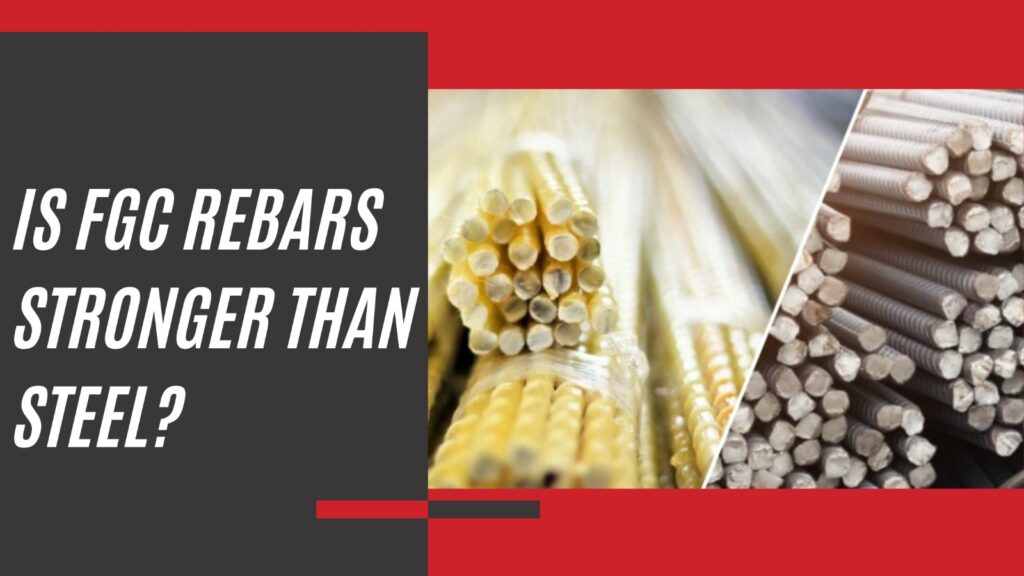FGC rebars are increasingly being adopted in construction for their corrosion resistance, high strength-to-weight ratio, and non-conductive properties. However, like any material, FGC Rebars come with their own set of limitations. In this blog, we will explore four significant constraints: elongation, inability to bend, lack of ductility, and the risk of cuts during handling. We will also provide suggestions to mitigate these challenges, ensuring safer and more effective use of FGC Rebars in construction projects.
-
Limited Elongation
One of the primary limitations of FGC Rebars is their limited elongation capacity. Unlike steel rebars, which can stretch under load, FGC Rebars exhibit very low elongation before failure.
Implications:
Brittle Failure: The low elongation of FGC Rebars means they fail abruptly without significant warning, as opposed to the ductile failure of steel which provides visible signs of distress before breaking.
Structural Concerns: In structures where flexibility and the ability to absorb and dissipate energy are critical, such as in earthquake-prone areas, the limited elongation of FGC Rebars can be a significant drawback.
Suggestions:
Complementary Materials: Use FGC Rebars in combination with other materials that can provide the necessary elongation and energy absorption. For example, hybrid reinforcement techniques can combine GFRP with steel to balance flexibility and strength.
Design Adjustments: Incorporate design strategies that minimize the need for rebar elongation, such as optimizing structural forms and load paths to reduce tensile stresses.
-
Inability to Bend On-Site
FGC Rebars cannot be bent on-site like steel rebars. They are manufactured in specific shapes and must be ordered accordingly.
Implications:
Pre-Planning Requirements: This limitation necessitates meticulous pre-planning and precise measurements to ensure that all rebars fit perfectly as modifications on-site are not feasible.
Logistical Challenges: Any design changes during construction could lead to delays and increased costs as new FGC Rebars must be ordered to match the revised specifications.
Suggestions:
Detailed Planning: Ensure thorough planning and precise detailing during the design phase to avoid needing on-site modifications.
Use of Couplers and Connectors: Employ couplers and connectors to join FGC Rebars, allowing for flexibility in assembly and minor adjustments without the need for bending.
-
Lack of Ductility
FGC Rebars are inherently non-ductile, meaning they do not deform plastically before failure. This characteristic poses several challenges in construction.
Implications:
Brittle Nature: The lack of ductility makes FGC Rebars more susceptible to sudden failure under excessive loads, which can be hazardous in structural applications.
Seismic Performance: In seismic zones, ductility is crucial for absorbing and dissipating energy. The non-ductile nature of FGC Rebars can compromise the seismic performance of structures.
Suggestions:
Hybrid Reinforcement: Combine FGC Rebars with steel or other ductile materials to enhance the overall ductility of the reinforcement system.
Enhanced Design Criteria: Design structures with enhanced safety factors and incorporate additional reinforcement in critical areas to compensate for the lack of ductility.
-
Risk of Cuts During Handling
FGC Rebars are made of glass fibers, which can pose a risk of cuts and abrasions to workers handling them on-site.
Implications:
Safety Hazards: The glass fibers can cause skin irritations, cuts, and other injuries if not handled properly, leading to potential safety hazards on construction sites.
Handling Challenges: Extra precautions are required during handling and installation, which can slow down the construction process.
Suggestions:
Personal Protective Equipment (PPE): Ensure that all workers handling FGC Rebars wear appropriate PPE, including gloves, long sleeves, and eye protection, to minimize the risk of injuries.
Training and Awareness: Conduct regular training sessions to educate workers about the proper handling techniques and the importance of using PPE when working with FGC Rebars.
Conclusion
While FGC Rebars offer numerous advantages over traditional steel rebars, such as corrosion resistance and a high strength-to-weight ratio, it is essential to understand and address their limitations. The issues of limited elongation, inability to bend on-site, lack of ductility, and the risk of cuts during handling require careful consideration and mitigation strategies.
By adopting complementary materials, ensuring detailed pre-planning, using appropriate safety measures, and considering hybrid reinforcement systems, the challenges associated with FGC Rebars can be effectively managed, allowing for their safe and efficient use in construction projects.




